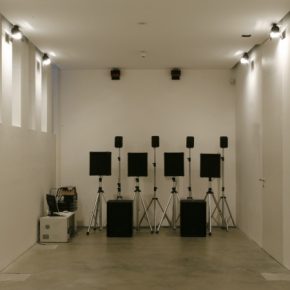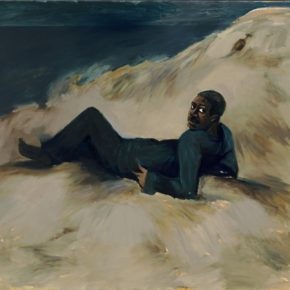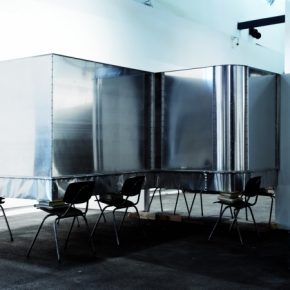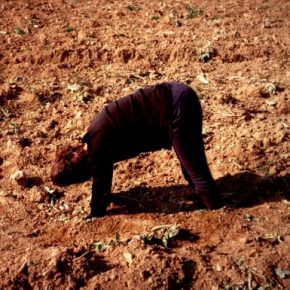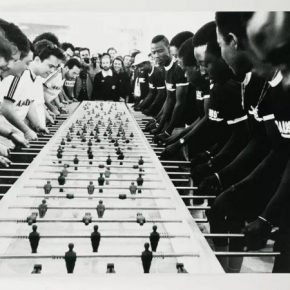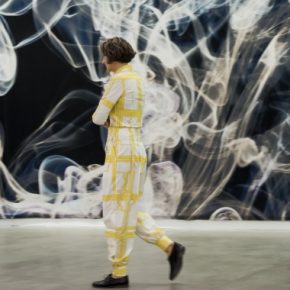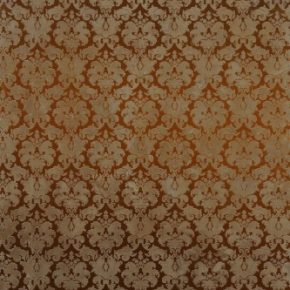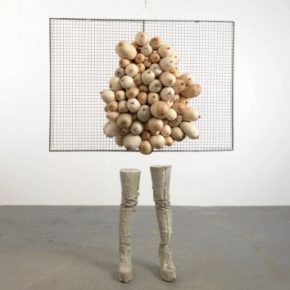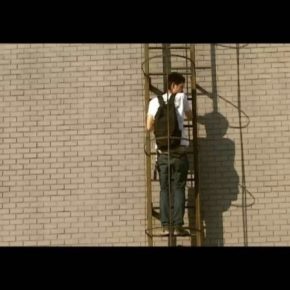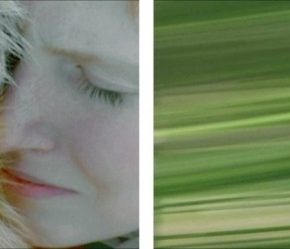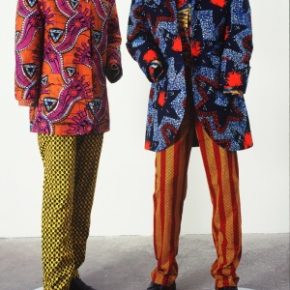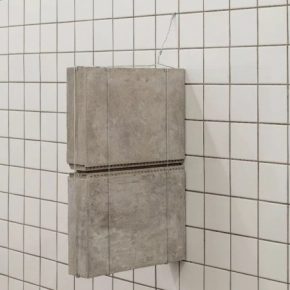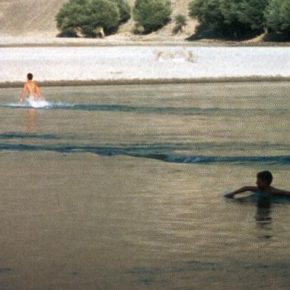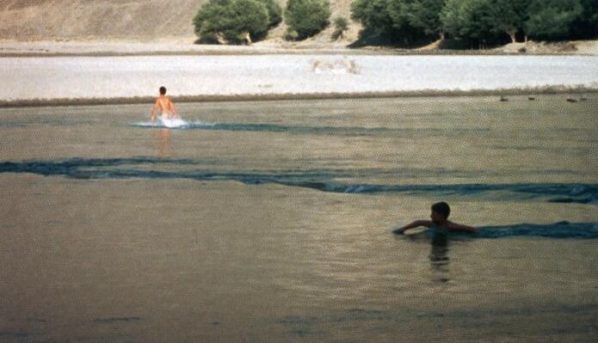
The Rockbund Art Museum in Shanghai is proud to present the latest exhibition “Walking On The Fade Out Lines” from March 24 to May 27, 2018. The fruit of a fascinating collaboration and exchange with Fondazione Sandretto Re Rebaudengo, one of the most renowned contemporary art institutions in Italy, the exhibition will be curated by Larys Frogier, the director of Rockbund Art Museum, and Hsieh Feng-Rong, the senior curator of Rockbund Art Museum. With 29 works from over 23 artists from all continents, spanning such various forms as paintings, interactive installations, photography, video, among others, the works are selected from the Sandretto Re Rebaudengo Collection, along with additional video works from Song Tao and new commissioned works from Zhang Ruyi, with the latter two artists originating from Shanghai and thus strengthening the rich connection to local contexts.
“Walking On The Fade Out Lines” tackles the ways and angles of “seeing” and invites viewers to revisit history, explore unfamiliar cities and regions. Viewers can scrutinize how artists offer up dilemmas through creative questioning, examination, and analyses from the end of the 20th century to the present, as well as how the thinking of the “Alterity” of the trans-regional is proposed in a globalized context. Through a poetic elaboration, the exhibition attempts to transform the intrinsic understanding of cognitive structures that had gone along set paths, thereby offering up more open and plural interpretative perspectives.
As Larys Frogier says, “‘Walking On The Fade Out Lines’ whispers, listens, connects with the Other, and yet there is no need to see the foreigner as the Other or to travel such distances to meet with and speak on behalf of an exotic Other. Radical alterity has first to be found and cultivated into our own place, our inner self, our individual and social interaction, with all kinds of beauty, ugliness, tyranny, harmony. There is always a foreign land from where we stand”.
Aligning with the respond to the notion “alterity”, “Walking On The Fade Out Lines” unfolds the meanings of artworks through open viewing perspectives. Walking into the museum, the first thing that strikes the eye is a yellow bear crawling on the floor. Created by the Italian artist Paola Pivi, Have you seen me before? is made up of feathers, plastic, and wood, commonly seen materials in everyday life. The yellow bear seems to awaken our memories of stuffed toy animals that accompany our coming of age, accidentally greeting us here. Midnight, Cadiz is a large oil painting by the British artist Lynette Yiadom-Boakye; in it, a black man lies leisurely on the ground at night, carelessly looking backward. When one approaches, one abruptly discovers that he is seemingly looking back.Still Untitled, a huge 12-meter-wide tapestry created by the American artist Pae White, portrays wisps of white smoke on a black background; the abstract misty design is actually made with traditional European craftsmanship. In the British artist Damian Hirst’s painting work Love Is Great, colorful butterfly samples are systematically stuck on the turquoise surface, as though fluttering in the serene heavens, vivaciously embodying the fragility of life and the conflicts of existence.
Shifting the ways of seeing allows viewers to reflect completely anew about the environment in which they are situated. The American artist Paul McCarthy’s large installation work Bang-Bang Room is a deconstructed living space; though viewers are invited to step into this seemingly familiar environment, they will immediately feel the shifts in the space, the moving walls, the constantly opening and closing doors along with the sounds, leaving them completely unprepared. The artist initiates a profound attack on the influence of people and environment on people’s psychology.The Canadian artists Janet Cardiff and George Bures Miller’s work Muriel Lake Incident creates a miniature model of a cinema which plays a Midwestern film noir. With the earphones on, viewers can peer into the interior of the cinema and yet immediately they will feel an intense dislocation: a woman eats popcorn while sharing her dreams and anxieties as though she was sitting right next to you. Through a relationship of double vision, the work subverts a traditional unidirectional system of viewing.
Different viewing perspectives also bring about reflections on numerous issues such as cultural memory, urban transformations, power politics, and identity, among others. Hassan Khan, an artistic pioneer of the underground music and experimental video art scenes in Cairo, has a sound installation DOM-TAK-TAK -DOM-TAK which brings viewers to the streets of Cairo through light and sound. The artist invited six Egyptian street artists who improvise six local Shaabi tunes respectively, and then the artist mixes the soundtracks into an all-new subjective improvisation.The video work Ariana meanwhile recounts the French artist Marine Hugonnier’s summer journey to Afghanistan in 2002. The artist was heading to shoot some footage in the Pandjsher Valley with an anthropologist and a geologist, but the authorities initially forbade them from entering due to the area’s strategic value. Even though permission to shoot was obtained in the end, the artist decided to give that up, instead turning her camera at everyday life there. The short sudden bursts of blackout and the poetic soliloquies explore the relationship between scenery and history and attempts to broach and reflect on the power and political relationship of viewing between the subject and the other. Ariana is part of a trilogy with the other two parts taking place in the Swiss Alps and the Amazons in Brazil; the entire trilogy will be presented in this exhibition.
Additionally, viewers will also accompany the Shanghai artist Song Tao in returning to early 2000s Shanghai in From the Last Century. The artist records in video the rapidly developing urban landscape. A group of youngsters similarly return to early childhood, kicking a football on the broad boulevards, playing on the newly built high-rises. What the artist wants to inquire is this: with the changes and improvements in living conditions, is Shanghai’s cultural memory also disappearing? The artist Zhang Ruyi, similarly from Shanghai, specially created site-specific works for this exhibition. By employing tiles and concrete, she examines from spatial displacements and attributes the “blockages” and “pressures” between people in cities.
The exhibition “Walking On The Fade Out Lines” minutely sorts through the trans-regional particularities in cultural contexts. In the totality of artistic expression constituted by the works, we hope to open the dialogic space of the epistemological world and continue to spark processes in which people explore the unknown. As the curator Hsieh Feng-Rong says, “By means of the artistic statements and imagery as carried across by the works, the exhibition uses the artworks as critical reflective tools and brings viewers into an unfamiliar landscape, entering into dialogue with them, and attempting to rebuild the state of imagination in that blurred boundary between the known and the unknown.” At the same time, a series of public education events will take place over the course of the exhibition in order to further explore this issue.
*With the support of Irene Calderoni and Stefano Collicelli Cagol from Fondazione Sandretto Re Rebaudengo.
About the exhibition
Dates: Mar 24, 2018 - May 27, 2018
Venue: Rockbund Art Museum (20 Huqiu Road, Huang Pu District, Shanghai)
Curator: Hsieh Fong-Rong, Larys Frogier
Artists: Victor Alimpiev, Massimo Bartolini, Vanessa Beecroft, Janet Cardiff and George Bures Miller, Maurizio Cattelan, Damien Hirst, Marine Hugonnier, Hassan Khan, Donghee Koo, Sarah Lucas, Mark Manders, Paul McCarthy, Gabriel Orozco, Paola Pivi, Navin Rawanchaikul, Charles Ray, Yinka Shonibare, Song Tao, Rudolf Stingel, Pae White, Lynette Yiadom-Boakye, Zhang Ruyi
Courtesy of the Rockbund Art Museum, for further information please visit www.rockbundartmuseum.org.






